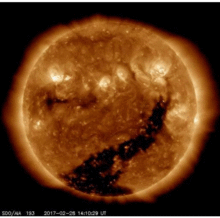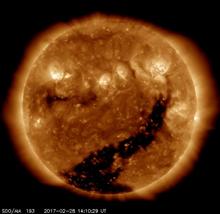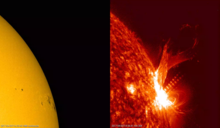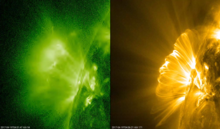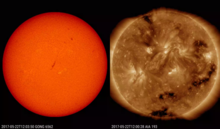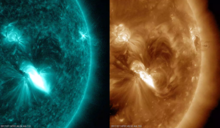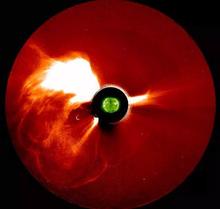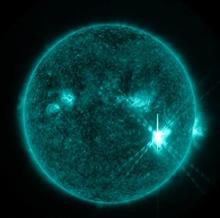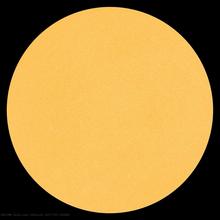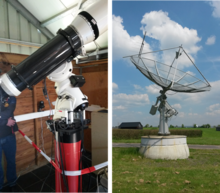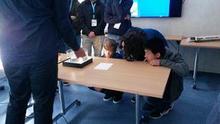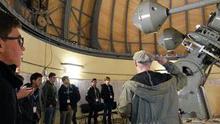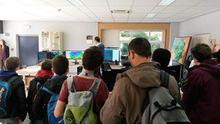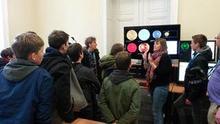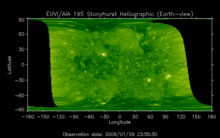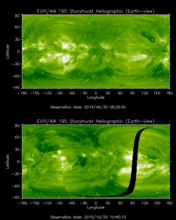news
Submitted on 2018-07-10
Some of last week's observed coronal mass ejections (CMEs) had an interesting story to tell.
Submitted on 2018-07-04
The Royal Observatory of Greenwich has installed four new state-of-the-art telescopes (AMAT), destined for both researchers and the broad public.
Submitted on 2018-06-19
A compilation of the most memorable space weather moments of 2017, featuring data, links and movies.
Submitted on 2018-06-06
Scientists from the STCE have contributed to a research programme that has detected -for the first time- proton aurora on Mars. They used data gathered during the period 2004-2011 by the SPICAM ultraviolet spectrometer on board of ESA's Mars Express.
Submitted on 2018-05-29
Sunspot region NOAA 2172 announced itself with dynamic coronal loops towering over the solar limb, and has produced already 2 C-class flares.
Submitted on 2018-05-17
The personnel of the Royal Observatory visited its research facilities in the caves of Rochefort/Lorette and at the observatory of Humain.
Submitted on 2018-05-02
School kids propose and develop experiments that are then launched into the stratosphere with a weather balloon from the RMI.
Submitted on 2018-04-17
The size and location of coronal holes are intimately related to the phase of the solar cycle, continuously giving the solar corona a different outlook in EUV over the last 10 years.
Submitted on 2018-04-11
A tiny and short-lived sunspot group at high latitude with the correct magnetic orientation of the new solar cycle was visible on 9 and 10 April. Though it did not get an official NOAA number, these "Tiny Tims" indicate that the start of SC25 is approaching
Submitted on 2018-03-27
The low solar activity of the last few months manifests itself also in the number of coronal mass ejections.
Pages
Zircon - This is a contributing Drupal Theme
Design by
WeebPal.














